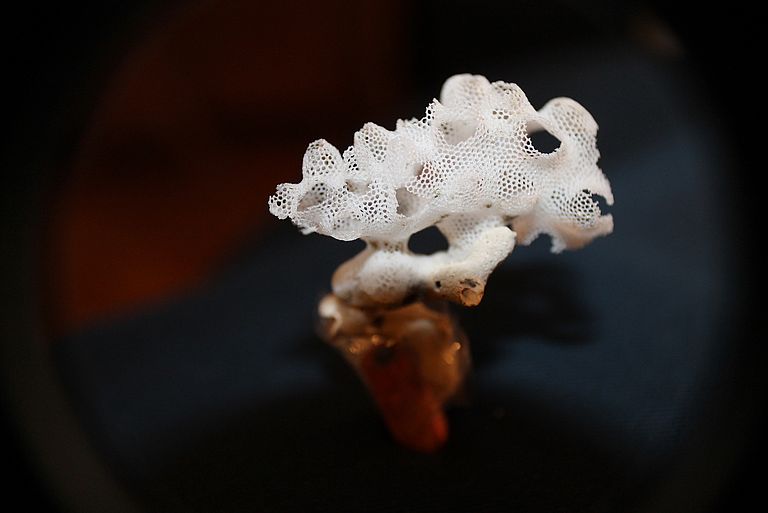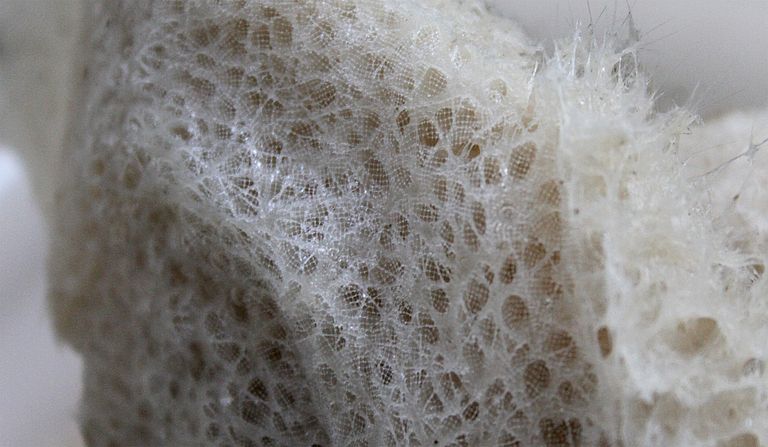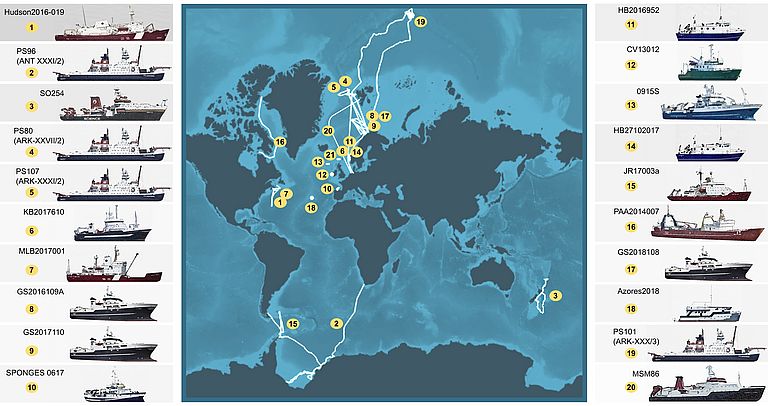Deep-sea sponge grounds explored on a large scale
Study led by GEOMAR shows that looking at larger ecological contexts is important when studying sponge microbiomes.
Sponges are among the evolutionarily oldest animals. While the smallest representatives are only a few millimeters in size, the largest known sponge is the size of a minibus. They occur in so-called sponge grounds, or sponge gardens – particularly densely populated ecosystems on the seafloor that harbor a sometimes high diversity of sponges. Many of these grounds exist at depths of several kilometers in the ocean, so a large number of species remain undetermined even today.
Symbiotic bacterial communities are present in the tissues of sponges, the microbiomes. These vary greatly depending on the phylogeny of the sponge in which they live. In addition, it is mainly environmental factors that account for differences in the microbiome – this is the result of a study recently published by scientists from GEOMAR Helmholtz Centre for Ocean Research Kiel in the journal Nature Communications. Above all, the location of the sponge grounds, the influences of temperature, salinity, depth, as well as oxygen and nutrient occurrence on the respective sponge microbiome were identified as the main environmental factors. A very comprehensive data set of 24 environmental parameters served as the basis for this analysis. The presented study represents the largest existing analysis of microbiomes and their symbiotic partners in the deep sea to date.
"Deep-sea sponges and their symbiotic bacteria have likely existed for a long time, probably hundreds of millions of years, in joint adaptation to a dynamic environment," said Dr. Kathrin Busch, lead author of the study and a marine ecologist at GEOMAR. "This may explain some of the great diversity of yet unknown bacterial classes and species we have encountered. Sponge grounds, and even sponge individuals, each have their own microbiomes. It should be noted that sponge grounds are sensitive and highly important deep-sea habitats that are threatened by trawling, among other activities." Sponges often become bycatch in this type of fishing. As a result, many important functions are lost. Together with their microbiome, they open up unique ecological niches, filter the water around them and provide new nutrients for creatures in the deep sea with their metabolic products.
"Since microbial communities also stand as indicators of sponge health, these fundamental data are valuable for monitoring the integrity and resilience of sponge gardens in the deep sea," says Professor Dr. Ute Hentschel Humeida, marine microbiologist at GEOMAR and co-author of the study. "We have developed a scientific basis here that can help improve protection and management strategies of endangered sponge grounds in the deep sea."
Data for the study were collected using 21 different shipboard expeditions. This involved sampling 52 different sponge gardens and collecting data on the sponges and their habitat in an elaborate way, for example using underwater robots such as the ROV Kiel 6000. Genomic sequencing was carried out to identify the sponges and bacteria. Of the 169 sponge species researched, many were still unknown at the time of the study.
Several broad discoveries were made during the study: First, the great diversity of bacteria in deep-sea sponges is remarkable – the majority of which are new to science. The microbiomes of sponges are more similar to each other than those from deep-sea sediments or seawater. This is remarkable because sponges, as food filterers, permanently filter large amounts of water through their tissues and yet have a different composition of bacteria than is found purely in seawater.
In addition, the host sponge leaves a formative effect on its microbiome: the microbiomes of closely related sponges are more similar to each other than those of distantly related sponges. Nevertheless, each deep-sea sponge hosts a unique microbial community.
Geography also plays an important role in bacterial composition. Samples were collected on 21 research cruises from one of the northernmost sponge gardens known to date, the Karasik seamount in the Arctic Ocean, through the temperate sponge grounds to the Southern Ocean. The result: the further the spatial distance, the more diverse the sponge microbiomes were.
Ultimately, the marine environment also has a formative influence on the sponge microbiome: in addition to bacterial density geographic distance and phylogeny of the sponges, physical-biogeochemical measures of the surrounding water (in this study, primarily temperature, salinity, depth, nutrients/oxygen) also determine the composition of the microbiome. Given the ever-increasing environmental changes and threats to deep-sea habitats (trawling and mining), the results provide particularly important insights as a guide for conservation and management strategies.
The study was integrated into the "SponGES" research project. It was supported by the European Union's Horizon 2020 research and innovation program. The research is the result of an international collaboration of 24 scientists from 22 different research institutions.
Publication:
Busch, K., Slaby, B. M., Bach, W., Boetius, A., Clefsen, I., Colaço, A., Creemers, M., Cristobo, J., Federwisch, L., Franke, A., Gavriilidou, A., Hethke, A., Kenchington, E., Mienis, F., Mills, S., Riesgo, A., Ríos, P., Roberts, E. M., Sipkema, D., Pita, L., Schupp, P. J., Xavier, J., Rapp, H. T., Hentschel, U. (2022): Biodiversity, environmental drivers, and sustainability of the global deep-sea sponge microbiome. Nature communications.
https://doi.org/10.1038/s41467-022-32684-4





